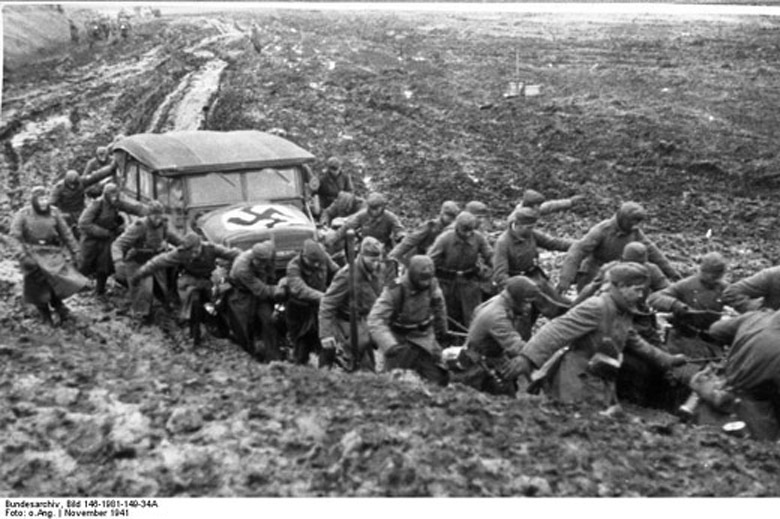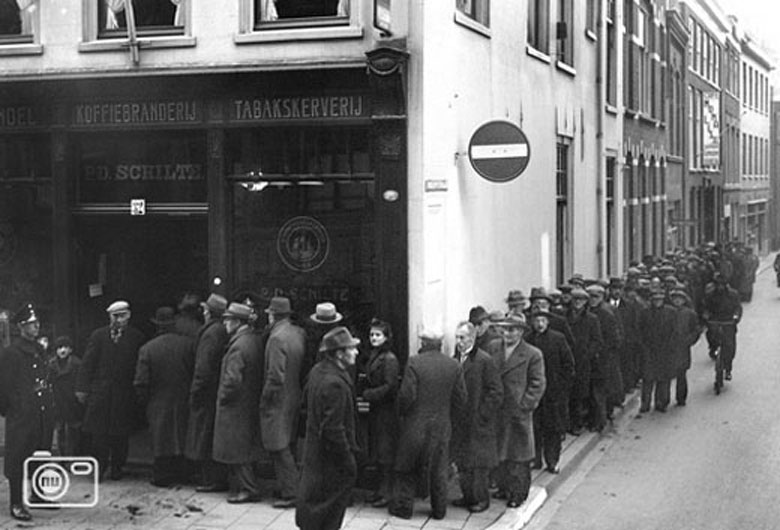Eastern Front
(8th?)In the Leningrad sector Tikhvin, east of the city, is taken by the Germans, cutting the rail route into the city. In the Crimea, Yalta falls to the German attack.
NORTHERN SECTORTikhvin falls to the XXXIX Panzer Corps, but fighting continues on the eastern outskirts as the Germans try to press toward the Svir amid temperatures of minus forty degrees centigrade. The 4th Army is fighting to prevent the Germans from effecting a junction with the Finns. With the disintegration of his army, Yakovlev is relieved and Meretskov appointed in his place. Meretskov is also given coordination of the 4th, 7th and 52nd Armies. The fact that the Soviets are holding back the Germans at all is astounding. With just 300 men, the 44th Rifle Division prevents the Germans from exploiting their gains toward Vologda. Soviet forces in the area are very weak, the 54th Army numbering 55,600 men, the 4th Army 62,700 and the 52nd Army just 42,000. The Novgorod Group fields 32,000 men.
The collapse of their defenses along the Volkhov compels the Soviet High Command to rush the 65th Rifle Division to this sector, its arrival being expected by November 11.
Soldiers Pulling a Car from the Mud |
 |
German pressure upon the outer defenses of Rostov mounts as Kleist pushes forward. Timoshenko plans to launch his own counteroffensive and calls for additional weapons from the High Command. Again he is refused, so he has to build up a reserve by scraping together spare units from his existing forces. From these forces he reinforces the 37th Army. Timoshenko's plan is to hald the German attack by breaking into the exposed northern flank of the 1st Panzer Army with the 37th, 12th, 18th and 9th Armies, while the 56th Independent Army pins the 1st Panzer frontally. Lopatin's 37th Army deploys around Krasnodar and Kolpakchy's 18th at Voroshilovgrad, both beginning the movement to their new sectors. The counterattack will draw in 22 rifle and 9 cavalry divisions and 5 tank brigades. The 18th and 12th Armies are to block the German advance at Voroshilovgrad.
From the Karelian forests in the north to the vast expanse of steppe in the south, the early onset of winter and tenacious Soviet defense had brought the German advance to a standstill. Inadequate replacements and over-extended lines of communication hampered an already exhausted army. Hitler's generals sought to finish off an enemy who refused to accept defeat with forces close to breaking point. Nearly five months of continuous combat, heavy casualties and a lack of replacement soldiers and equipment was sapping the strength of the combat divisions. However, the seemingly endless resources of the Red Army also appeared to be nearing their end. With the fighting closer to Moscow than ever, the field armies were shadows of their former selves. Battered, exhausted and having retreated some six hundred miles, the Red Army refused to die. Yet in this hour of need the Soviets were finding a new generation of generals, men who would make the Germans reap what they had sown.[
People Trying to Buy Coffee and Tobacco |
 |